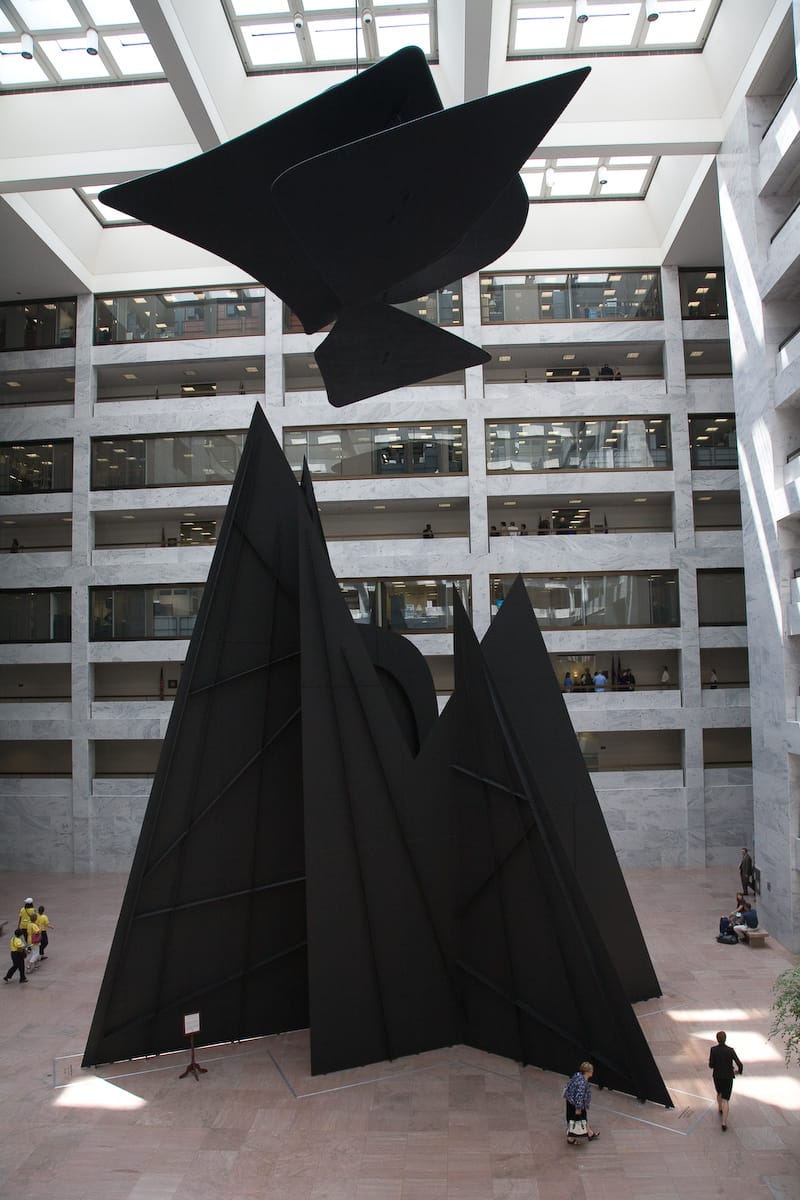How Many DC Bureaucrats Does It Take to Fix a Calder Mobile?
It may sound like the beginning of a joke, but members of the US Senate are pondering the mobility of an Alexander Calder mobile.

It may sound like the beginning of a joke, but members of the US Senate are pondering the mobility of an Alexander Calder mobile. One of the sculptor’s last artworks has been broken down for years, but a US senator is hoping to reboot it. “Mountains and Clouds,” which Calder finished designing the day before his death in 1976 and was finally completed a decade later, is the artist’s only work featuring both a stabile (the artist’s preferred term for his floor sculptures) and a mobile. The latter component, a group of four black steel clouds that collectively weigh 4,300 pounds and span 75 feet, used to rotate, but several years ago a ball bearing faltered, rendering the hulking mobile immobile.
“Right now it’s not really a Calder in that it’s not really doing what Calder wanted it to do,” Chris Murphy, the Democratic senator from Connecticut who wants to reactivate the sculpture told the Wall Street Journal. (The Calder Foundation, for its part, considers “Mountains and Clouds” not really a Calder because the artist didn’t oversee the execution of his design.)

“Mountains and Clouds” very nearly fills the atrium of the Hart Senate Office Building in Washington, DC — which opened in 1982 and where many senators’ offices are located — but it almost never got made. Calder was awarded the commission for the atrium sculpture in April of 1976, and finalized the design on November 10, 1976 — he died the following day after returning home to New York. But in 1979, as the costs associated with construction of the Hart Building ballooned to about triple the original estimate, Congress retracted funding for the sculpture. Three years later, Nicholas Brady, the Republican senator from New Jersey, led an initiative to raise $650,000 in order to complete the sculpture, and it was finally dedicated in 1987.
The artwork is currently undergoing structural analysis that will include lowering its cloud components to the floor of the atrium, inspecting them, and insuring that they are structurally sound. According to a filing by the Architect of the Capitol, which maintains the grounds and government buildings on Capitol Hill, “Work is expected to be completed in late 2015 and will ensure the sculpture can safely serve future generations of visitors and Senate staff.”
However, some members of the Senate staff aren’t so eager to spend time and money fixing the mobile.
“Is that one of the pressing problems we have now in the Capitol?” West Virginia’s Democratic Senator Joe Manchin asked the WSJ. His Republican colleague from Utah, Orrin Hatch, echoed the sentiment: “I could live without that.”
In spite of the ambivalence many of those who share the Hart Building with the Calder feel toward the sculpture, the man who first programmed its clouds to rotate says it would be an easy fix. “Washington may complicate this, but it ain’t difficult,” engineer Nelson Young told the WSJ. “It’s not rocket science.”





